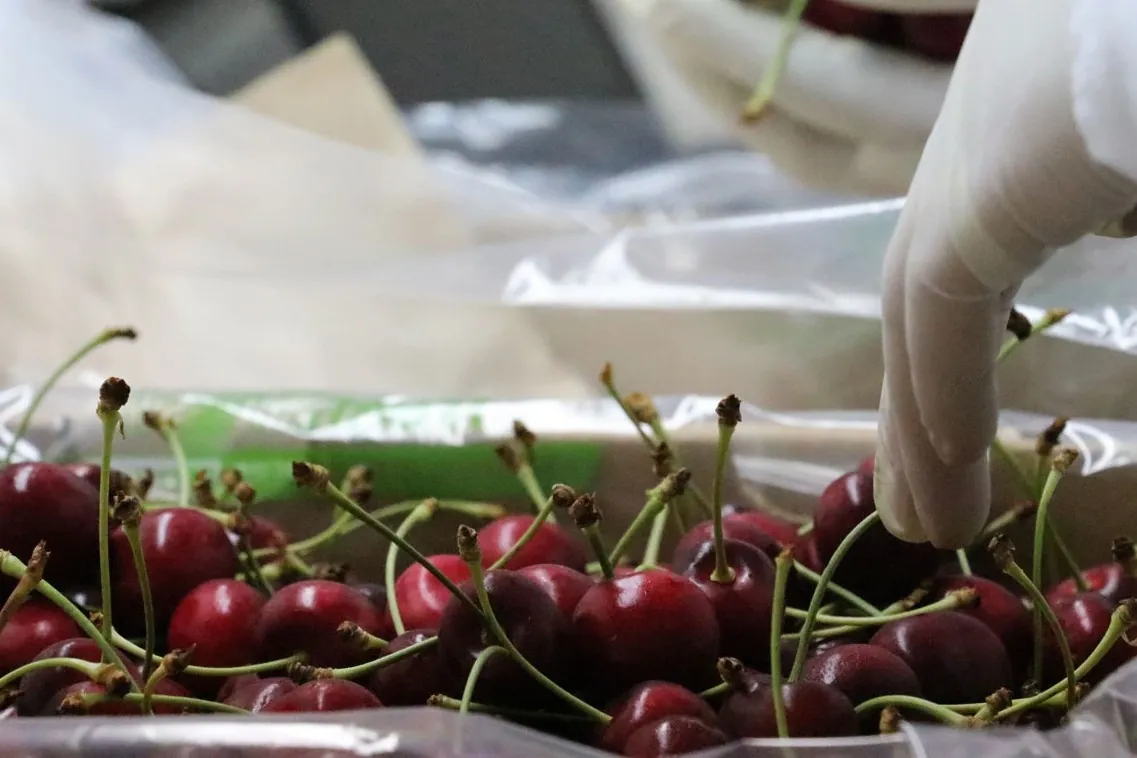Despite the significant climatic instability of the current year, the cherry season of the Sant’Orsola cooperative looks very promising. The frequent and intense rains of May and June, which occurred during the flowering period of the cherry trees in the cooperative's main production areas – predominantly located in Trentino and particularly in Valsugana – initially raised concerns.
However, thanks to the rain covers and anti-insect nets installed on most of the plants, the damage was minimized to the minimum.
A significant novelty this year is the inclusion of late cherries from hill and mountain areas produced by South Tyrolean companies, with plants located up to 1,500 meters in altitude. This will allow the Sant’Orsola cherry season to extend throughout the month of July.
The harvest of the variety Kordia, the flagship of the cooperative, began towards the end of June, with about a week delay compared to the traditional schedule, and is reaching its peak during these days of July.
Nicola Leonardi, head of the commercial area of Sant’Orsola, provides an optimistic overview of the situation: “We expect a very good season in terms of both quantity and quality, with at least 70% of the cherries being 28 caliber or larger. Our Kordia cherries are crunchy to the right point and have a good flavor, and the finally sunny days of July further enhance their taste qualities".
"Soon, the harvest of the variety Regina will also begin. Quantity, quality, and size are suitable to satisfy even the most demanding customers and consumers. We can meet the now very high demand, while in June, to make up for the sharp decline in national production due to bad weather in regions such as Puglia and Emilia Romagna, traditionally large producers of cherries, we supplemented the offer with Greek and Turkish cherries.
Moreover, the collaboration with the South Tyrolean companies will allow us to meet the market demand until the end of July.”
The associated producers followed the cooperative's guidelines and made the necessary investments, thus obtaining significant benefits. Another advantage is the "scendi albero" harvesting method, which allows them to dedicate more time to the care of the plants and the land. The selection for quality and size of the cherries is entrusted to high technology machines in the cooperative's facility, further enhancing the work of the members who have been growing cherries for over 40 years.
An additional novelty these days concerns the labels on the packages of Sant’Orsola brand cherries. The new graphics and colors historically recall the beginning of production and the Italian origin of the product.
Source: Corriere Ortofrutticolo
Image: SL Fruit Service
Cherry Times - All rights reserved












